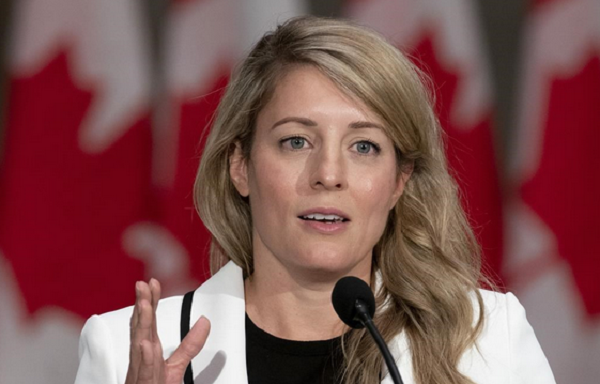About half of the federal government’s office buildings could be transformed into housing, expert firm says
Up to 45 per cent of the office buildings owned and leased by the federal government, which has vowed to transform much of its commercial space into residential dwellings, could be turned into apartments, said a top architectural firm with expertise in such conversions.
Gensler, which has analyzed hundreds of buildings in more than 150 North American cities and worked with Canadian jurisdictions, including the federal government, said a significant share of the federal office portfolio has characteristics that make it suitable for conversion.
A lot of the space the federal government owns and leases is in buildings constructed in the 1960s and 1970s and those generally have smaller floor plates – the breadth of the building – and access to natural light, two critical features that help make an office-to-residential conversion possible.
Steven Paynter, Gensler’s global leader of building transformation and adaptive reuse, said housing is the best option for the federal buildings because there isn’t commercial demand for many of the properties the government currently owns and leases.
“It’s really the only way forward,” said Mr. Paynter, who provided the 45-per-cent estimate to The Globe and Mail. “They’re just the least desirable of all office space.”
Although Gensler has done work for Ottawa, Mr. Paynter declined to provide details. He said the 45-per-cent estimate is based on previous analyses Gensler has completed on office buildings around the world.
Faced with growing frustration over high housing costs and lack of availability, Ottawa has announced plans to put homes on every possible piece of federal land. This includes exploring how to create more housing with its office buildings, which it plans to reduce by half over the next 10 years to cut maintenance costs on underused buildings.
The federal government owns about half of its office portfolio and leases the rest. But regardless of whether the building is Crown-owned, the landlord may have to consider a conversion because of the lack of demand.
On Saturday, The Globe published Wasted Space, an analysis of publicly owned federal land across the country and its suitability for housing. Among other findings, The Globe identified 154 larger buildings that were three storeys and taller and that were close to housing located in cities, towns and municipalities with more than 10,000 people – making them potential candidates for housing, either through residential conversions or by developing housing on underused space on the land they sit on.
For instance, many of these buildings are situated on significant parcels of land with large surface parking lots, including the headquarters of Canada Mortgage and Housing Corp. The Globe analysis also identified an additional 613 low-rise buildings near amenities – what planners refer to as “lazy land” – that could be used to support affordable housing.
The federal government acknowledged in its most recent budget that it doesn’t have an accurate accounting of the land it owns, much less which lots would be possible to use for housing.
In a Globe interview, Jean-Yves Duclos, Minister of Public Services and Procurement, said converting or redeveloping buildings holds “significant” potential for housing.
”There is room for the federal government to reduce the cost of maintaining those buildings, and also an opportunity for buildings to be used as homes,” said Mr. Duclos, whose department owns hundreds of buildings.
As Canada’s capital city, Ottawa is home to most of the federal government’s underutilized office towers. The city has double-digit office vacancy rates like other North American cities, and though its vacancies are not as high as Toronto or Manhattan, those rates don’t reflect how empty those workspaces have become since the COVID-19 pandemic spawned work-from-home policies.
Public servants have shunned the return to the office and their absence has hollowed out many downtown buildings in Ottawa, sparking concerns from businesses, retailers and the city’s mayor.
According to Mr. Duclos, the buildings on his department’s land were already about 40-per-cent empty before the pandemic – and have only become emptier as public servants began working more days from home.
The federal budget estimates that about half of its six-million square metres of office space is underused or entirely vacant.
Many of the federal office buildings are decades old with dated heating and cooling systems. Some are sitting empty waiting to be disposed of, at a maintenance cost to taxpayers. Many are only being partially used. Others had already been declared surplus before the government announced its plan to lease public land for housing.
“This is not an effective use of resources, particularly at a time when Canada is facing a shortage of homes,” said the budget.
However, many of these office buildings are in ideal locations for residential conversions because they are close to amenities and provide cities the opportunity to bring life back into the core.
Mr. Paynter estimates that converting up to 45 per cent of the federal government’s office buildings could produce about 50,000 housing units, the equivalent of more than 100 condo towers.
He said converting an office building is normally faster than developing a new condo or apartment building, which can take up to six years. And he said developers do not run into the regular “NIMBY” opposition that new condo towers typically attract because the office building is already there.
“People are excited because you’re taking the building that’s there empty and turning it into something that’s not derelict anymore,” he said. “So the public support is much, much higher.”
Also, converting existing office space to housing is a more environmental approach than constructing a new building. “The lowest carbon footprint is the building that already exists that you can retrofit,” said Dawn Parker, a professor in the School of Planning at the University of Waterloo.
As buildings are declared surplus, the government said it will work with a variety of groups – including Indigenous organizations, private contractors and non-profit housing developers – to create housing projects that fit local needs.
However, conversions are complicated. They require dealing with issues such as contamination, residential building codes, bathrooms and access to light.
And they need to be part of a deliberate urban plan. Mary Rowe, president of the Canadian Urban Institute, said while housing is necessary, a city still needs well-designed space for workers. Heritage government buildings might be overdue for renovation or repurposing, but Ms. Rowe suggests that still needs to be tempered against protecting the country’s architectural heritage.
The government, as a large landlord, will have to be mindful of the effect that closing offices will have, Mr. Paynter said. “If they did pull out of a bunch of space there, it could have serious economic impact on the city and the viability of the downtown as well by just hugely reducing the number of people there,” he said.
Still, our current predicament also contains an important lesson, Ms. Rowe said: Going forward, building design should accommodate different uses as needs change. “We have to always be anticipating. What’s the next future use?”
This article was first reported by The Globe and Mail












